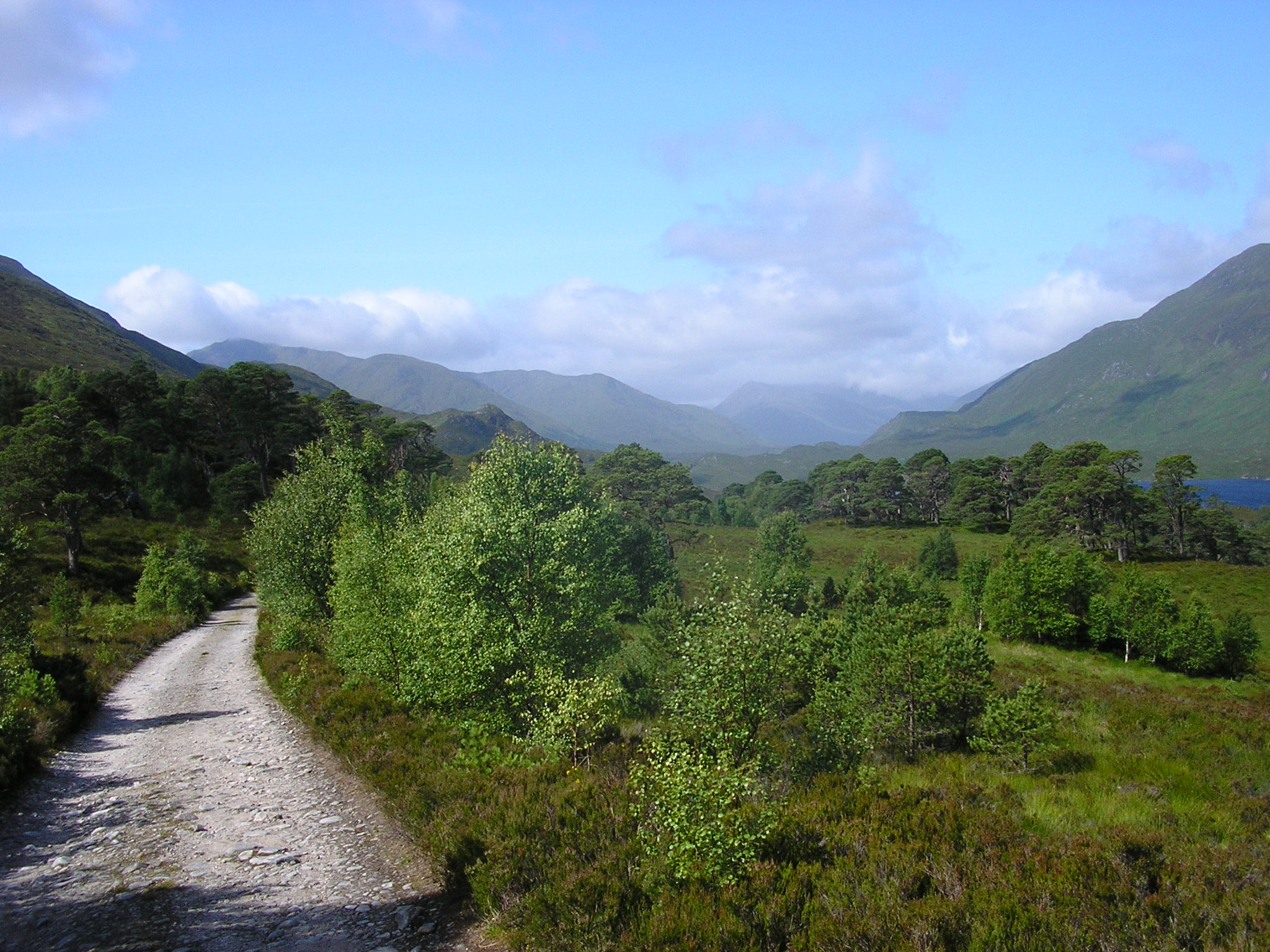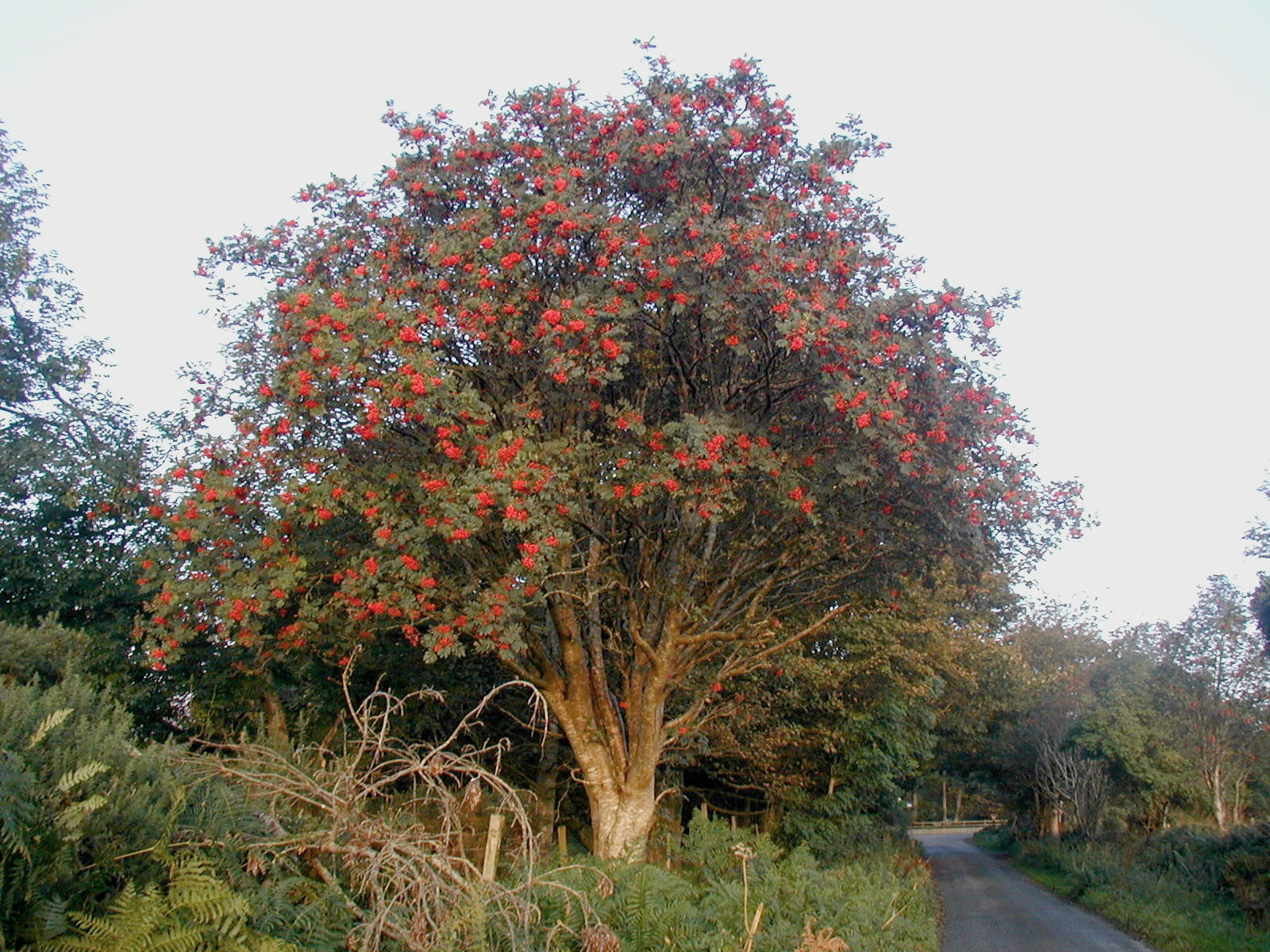|
Last Ent Of Affric
The Last Ent of Affric is an ancient elm in the Scottish Highlands, designated a Tree of National Special Interest (TNSI) by the Woodland Trust and named Scotland's Tree of the Year in 2019. It is probably the last surviving tree of an ancient forest, and by virtue of its isolation has remained safe from Dutch elm disease. History and description The 'Last Ent of Affric' is a centuries-old Wych elm (Ulmus glabra), named in reference to the tree-creatures of J.R.R. Tolkien's ''Lord of the Rings''. Giles Brockman of Forestry and Land Scotland (FLS), who nominated the tree for the Tree of the Year Award 2019, said:Given its location, its isolation - and its peculiar 'face' - it's very easy to imagine it as one of Tolkien's Ents standing sentinel over the rebirth of a new native woodland in Affric.It has a girth of 3.80m at a height of 1.50m. It is located in Glean nan Ciche, a side spur off Glen Affric in the Highlands of Scotland. The Last Ent's exact age is uncertain, but its d ... [...More Info...] [...Related Items...] OR: [Wikipedia] [Google] [Baidu] |
Ulmus Glabra
''Ulmus glabra'' Hudson, the wych elm or Scots elm, has the widest range of the European elm species, from Ireland eastwards to the Urals, and from the Arctic Circle south to the mountains of the Peloponnese and Sicily, where the species reaches its southern limit in Europe; it is also found in Iran. A large deciduous tree, it is essentially a montane species, growing at elevations up to , preferring sites with moist soils and high humidity.Heybroek, H. M., Goudzwaard, L, Kaljee, H. (2009). ''Iep of olm, karakterboom van de Lage Landen'' (:Elm, a tree with character of the Low Countries). KNNV, Uitgeverij. The tree can form pure forests in Scandinavia and occurs as far north as latitude 67°N at Beiarn in Norway. It has been successfully introduced as far north as Tromsø, Norway and Alta, Norway (70°N). It has also been successfully introduced to Narsarsuaq, near the southern tip of Greenland ( 61°N). The tree was by far the most common elm in the north and west of the Britis ... [...More Info...] [...Related Items...] OR: [Wikipedia] [Google] [Baidu] |
Glen Affric
Glen Affric ( gd, Gleann Afraig) is a glen south-west of the village of Cannich in the Highland region of Scotland, some west of Loch Ness. The River Affric runs along its length, passing through Loch Affric and Loch Beinn a' Mheadhoin. A minor public road reaches as far as the end of Loch Beinn a' Mheadhoin, but beyond that point only rough tracks and footpaths continue along the glen.Ordnance Survey 1:50000 Landranger Sheet 25, ''Glen Carron and Glen Affric.'' Often described as the most beautiful glen in Scotland, Glen Affric contains the third largest area of ancient Caledonian pinewoods in Scotland, as well as lochs, moorland and mountains. The area is a Caledonian Forest Reserve, a national scenic area and a national nature reserve, as well as holding several other conservation designations. The forests and open landscapes of the glen, and the mountains on either side, are a popular destination for hikers, climbers and mountain bikers. Flora and fauna Glen Affric i ... [...More Info...] [...Related Items...] OR: [Wikipedia] [Google] [Baidu] |
Cannich
Cannich (Gaelic: ''Canaich'') is a village at the southern end of Strathglass, in the Highlands of Scotland, about west of the city of Inverness. It is at the furthest point of the A831 that loops around the Aird from Beauly to Drumnadrochit. It is home to Strathglass Shinty Club, one of the oldest organised shinty clubs in the world. The game of shinty and the Strathglass club owe much to Captain Chisholm. He chaired a meeting in the Glen Affric Hotel, Cannich, on 27 January 1880, at which he was elected the first Chief. Duncan Chisholm, Raonabhraid, was voted in as secretary and treasurer, and 10 Chieftains representing each of the districts in the Strath were also elected. The club's first honorary president was The Chisholm, Erchless Castle. Captain Chisholm produced the first constitution, rules and regulations of Strathglass Shinty Club, which were approved at the first general meeting, again held in the Glen Affric Hotel, on Tuesday 10 February 1880. A total of 131 club m ... [...More Info...] [...Related Items...] OR: [Wikipedia] [Google] [Baidu] |
Scottish Highlands
The Highlands ( sco, the Hielands; gd, a’ Ghàidhealtachd , 'the place of the Gaels') is a historical region of Scotland. Culturally, the Highlands and the Lowlands diverged from the Late Middle Ages into the modern period, when Lowland Scots replaced Scottish Gaelic throughout most of the Lowlands. The term is also used for the area north and west of the Highland Boundary Fault, although the exact boundaries are not clearly defined, particularly to the east. The Great Glen divides the Grampian Mountains to the southeast from the Northwest Highlands. The Scottish Gaelic name of ' literally means "the place of the Gaels" and traditionally, from a Gaelic-speaking point of view, includes both the Western Isles and the Highlands. The area is very sparsely populated, with many mountain ranges dominating the region, and includes the highest mountain in the British Isles, Ben Nevis. During the 18th and early 19th centuries the population of the Highlands rose to around 300,000, but ... [...More Info...] [...Related Items...] OR: [Wikipedia] [Google] [Baidu] |
Woodland Trust
The Woodland Trust is the largest woodland conservation charity in the United Kingdom and is concerned with the creation, protection, and restoration of native woodland Natural heritage, heritage. It has planted over 50 million trees since 1972. The Woodland Trust has three aims: to protect ancient woodland which is rare, unique and irreplaceable, to promote the restoration of damaged ancient woodland, and to plant native trees and woods to benefit people and wildlife. The Woodland Trust maintains ownership of over 1,000 sites covering over 24,700 hectares (247 km2). Of this, 8,070ha (33%) is ancient woodland. It ensures public access to its woods. History The charity was founded in Devon, England in 1972 by retired farmer and agricultural machinery dealer Kenneth Watkins. The Trust's first purchase was part of the Avon Valley Woods, near Kingsbridge, Devon. By 1977 it had 22 woods in six counties. In 1978 it relocated to Grantham in Lincolnshire and announced an expans ... [...More Info...] [...Related Items...] OR: [Wikipedia] [Google] [Baidu] |
Tree Of The Year (United Kingdom)
The Tree of the Year competition is held in the United Kingdom in autumn each year by the Woodland Trust, a nationwide conservation charity. Nominated trees are shortlisted by a panel of experts, before going to public votes to select a tree of the year for each of the four constituent countries of the United Kingdom. The panel then selects one of these to become Britain's tree of the year and be nominated for the following year's European Tree of the Year. The competition has been run each year since 2014. History The European Tree of the Year competition has been running since 2011 and selects a tree from participating countries (now 13 in number) by public vote. It was inspired by an earlier Czech national contest. Most countries hold a national poll to select their entrant for each year. Nominations are made in the year preceding the award. The United Kingdom did not enter the competition until 2013 when Niel Gow's Oak and the Oak at the Gate of the Dead were nominated ... [...More Info...] [...Related Items...] OR: [Wikipedia] [Google] [Baidu] |
Dutch Elm Disease
Dutch elm disease (DED) is caused by a member of the sac fungi (Ascomycota) affecting elm trees, and is spread by elm bark beetles. Although believed to be originally native to Asia, the disease was accidentally introduced into Americas, America, Europe, and New Zealand. In these regions it has devastated native populations of elms that did not have resistance to the disease. The name "Dutch elm disease" refers to its identification in 1921 and later in the Netherlands by Dutch phytopathologists Marie Beatrice Schol-Schwarz, Bea Schwarz and Christine Buisman, who both worked with professor Johanna Westerdijk. The disease affects species in the genera ''Ulmus'' and ''Zelkova''; therefore it is not specific to the Ulmus × hollandica, Dutch elm hybrid. Overview Dutch elm disease (DED) is caused by ascomycete microfungi. [...More Info...] [...Related Items...] OR: [Wikipedia] [Google] [Baidu] |
Wych Elm, Gleann Na Cìche (geograph 7210939)
Salt, also referred to as table salt or by its chemical formula NaCl (sodium chloride), is an ionic compound made of sodium and chloride ions. All life depends on its chemical properties to survive. It has been used by humans for thousands of years, from food preservation to seasoning. Salt's ability to preserve food was a founding contributor to the development of civilization. It helped eliminate dependence on seasonal availability of food, and made it possible to transport food over large distances. However, salt was often difficult to obtain, so it was a highly valued trade item, and was considered a form of currency by certain people. Many salt roads, such as the via Salaria in Italy, had been established by the Bronze Age. All through history, availability of salt has been pivotal to civilization. In Britain, the suffix " -wich" in a place name sometimes means it was once a source of salt, as in Northwich and Droitwich, although other - wich towns are so named from the ... [...More Info...] [...Related Items...] OR: [Wikipedia] [Google] [Baidu] |
Individual Trees In Scotland
An individual is that which exists as a distinct entity. Individuality (or self-hood) is the state or quality of being an individual; particularly (in the case of humans) of being a person unique from other people and possessing one's own needs or goals, rights and responsibilities. The concept of an individual features in diverse fields, including biology, law, and philosophy. Etymology From the 15th century and earlier (and also today within the fields of statistics and metaphysics) ''individual'' meant " indivisible", typically describing any numerically singular thing, but sometimes meaning "a person". From the 17th century on, ''individual'' has indicated separateness, as in individualism. Law Although individuality and individualism are commonly considered to mature with age/time and experience/wealth, a sane adult human being is usually considered by the state as an "individual person" in law, even if the person denies individual culpability ("I followed instruct ... [...More Info...] [...Related Items...] OR: [Wikipedia] [Google] [Baidu] |
Trees Of The United Kingdom
Many lists of trees of Great Britain and Ireland have been written. There are a number of issues surrounding the inclusion of a species in such a list. As can be seen from the outline of debate below, there is no 'correct' list of trees of Britain and Ireland. Issues of debate Definition of species There are a number of different opinions regarding the validity of some species, notably apomictic microspecies and whether some 'species' may actually be hybrids. In particular, the number and definition of species in the genera ''Sorbus'' ( rowans, whitebeams etc.), ''Ulmus'' (elms) and ''Salix'' (willows) are open to debate. Definition of native Native species are considered to be species which are today present in the region in question, and have been continuously present in that region since a certain period of time. When applied to Britain and Ireland, three possible definitions of this time constraint are: * a species that colonised these islands during the retreat of ice at ... [...More Info...] [...Related Items...] OR: [Wikipedia] [Google] [Baidu] |









